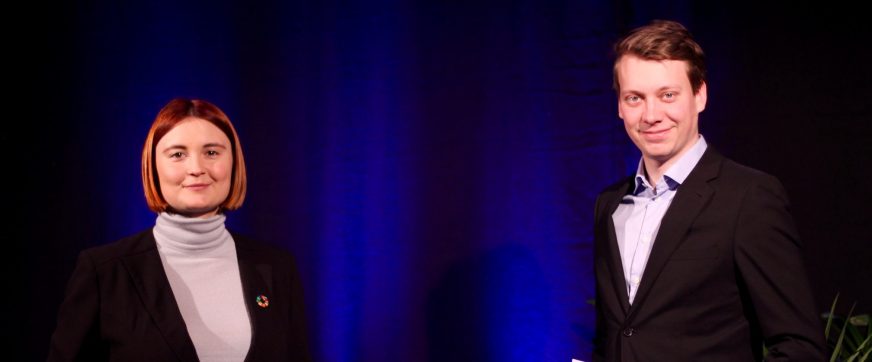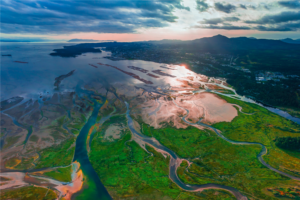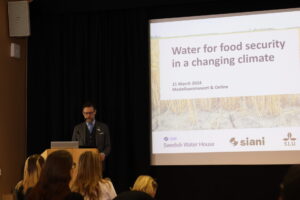When we value water, we value life
As Per Bolund, Deputy Prime Minister and Minister for Environment and Climate, opened the event and set the tone for the morning’s webinar, he spoke concisely of the threats to our water: from groundwater to the sea, upstream and downstream.

He emphasised that when we try to place a value on water, we are placing value on life. This sentiment resonated with the audience who, via a Mentimeter word cloud, responded with what water means to them. There was a resoundingly clear winner: life.
What we mean by “value” continued to be explored in the first panel. The juxtaposition between environmental economists arguing for water needing to have an intrinsic and quantifiable value versus the lived experience of the people and nature depending on that water was exposed.
We were joined by Jannie Staffanson from the Sami village Eajran Sijte who called such a conflict in approach: “a system failure”. As with many other issues, indigenous peoples around the world are becoming increasingly vulnerable to the effects of climate change and the water issues it causes.
And yet it is common for these people and groups not to be listened to, nor considered in decision-making concerning the management of shared natural resources. Jannie Staffanson emphasised that she spoke not just for herself but for the many Sami people who speak a different language and thus are excluded in such dialogues – as well as on behalf of nature, such as the reindeer her village cares for.
When exploring the multitude of values water holds: both environmentally, economically, socially and philosophically, it was the praxis of setting economic value that engaged panellists. A practice explored and questioned by Emma Carmody who joined via a pre-recorded interview in which she dissected the water markets seen in Australia. SMHI presented a study on water extraction where they too have tried to quantify water use – a previously ignored metric that showed its necessity during the water shortages seen in 2018.
The final panel addressed an underlying question: who decides which of the values discussed is most valuable. A question from the audience raised the importance of not just focusing on how to define the problems faced but on finding shared sustainable solutions. Panelists agreed on the need for a collaborative, knowledge sharing approach which crosses sectors and considers waters multitude of values. Their discussion also covered where the responsibility for ensuring that Sweden has a sustainable supply of water even in the face of a changing climate lies.
When considering approaches, we must also think outside of the box. Jens Thoms Ivarsson is creative director for Rain Gothenburg and emphasized the importance of finding creative ways to engage people in considering the value of water. Especially when it seems an inconvenience i.e. when being rained on in a city known for rain. Torgny Holmgren, SIWI, also proposed another less concrete value: the aesthetic of water – which has a very concrete value when considering the difference in property prices depending on proximity to water.
The event was held by Swedish Water House organized together with SMHI, Swedish Water and the Church of Sweden. The event was moderated by Viktor Sundman, SIWI and Sarah Brelsin, SIWI with concluding remarks from Torgny Holmgren, SIWI.







